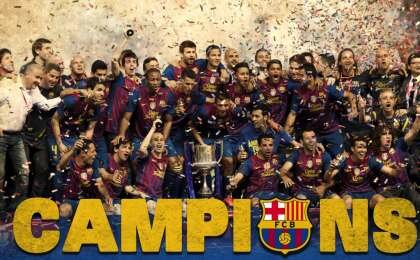 analysis | 2015-08-26
analysis | 2015-08-26
The flag guardian
Leo Messi throws the alley-oop to Neymar and clears his flank for the Brazilian’s dribbling, he gives away Luis Suárez open spaces near the opponent area by cutting into the inside, he covers Rakitic in the right-attacking midfield in order to let the Croatian fly, he builds up the game with Iniesta and makes the team play in the rivals’ half, where Sergio Busquets thrives in situations he enjoys the most. He makes Jordi Alba’s attacks on spaces an essential cog in Barça’s game system, by dragging various markers to the right zone and then changing the play to the left wing. He rediscovers a dominant Dani Alves by means of the short passes combination with him. He backs up a makeshift center back like Mascherano, who confines his duties to anticipate and run and he makes the job easier for Claudio Bravo and ter Stegen by unleashing his attacking force and forcing the opponent to be cautious. And what about Piqué? Piqué is the other Messi. He’s the second mainstay alongside the Argentinian. He is the origin and he serves as the foundation for the game developed by several of his teammates.
The center back’s impact on the team in the last few years grew exponentially when he stopped being a fireman and he became the flag guardian. The fire spreads in the treble winner’s defensive system when the rival crosses the halfway line and to Piqué, for whom it is not only impossible to cover all fronts but is also the easiest way to burn himself out. Facing this, the solution was to let the fire blaze as long as it didn’t reach the most important thing: the flag. The area, the goal, the central line, and there goes Piqué. He concedes the wings to the opponents because eventually the ball will have to come back to the central zone and there he would wait for it like a watchtower, in order to clear it away or to win the aerial duel. That’s the precise reason why Barcelona struggles the most when Piqué worries about what’s happening on the flanks. Those occasions in which he covers Alves’ back or when the rival striker entices him to join him close to the line. It happens quite a few times. The last ones were against Sevilla in the European Super Cup or versus Bayern in the Allianz Arena, when the favorable margin invited him to relax. If he has the proper focus, it’s crystal clear to Piqué: the flag above all.
He maintains the same purpose when the team must face other game situations. For example, when transitioning to defend the rivals’ counterattacks, Gerard’s mission is to not rule himself out, to remain between his goalkeeper and the ball, lengthening the play in progress. Thanks to this ability to delay these kinds of actions, Barcelona didn’t concede a single goal with an opponent pass behind the defenders’ back last season. Another story is the defensive system in set-piece plays, Barça’s weak spot before but is now its trump card. While the rest of the team is manmarking and Luis Suárez is safeguarding the first post, Gerard has the freedom to move around the heart of the area, defending every corner kick. Now, while he’s banned for the first four league matchdays, Barça will have to cope with the difficult challenge of keeping its flag safe without last season’s best defender.

Article translated from Spanish to English, originally published on En Un Momento Dado by Albert Morén. EUMD is one of Grup 14's partners.










